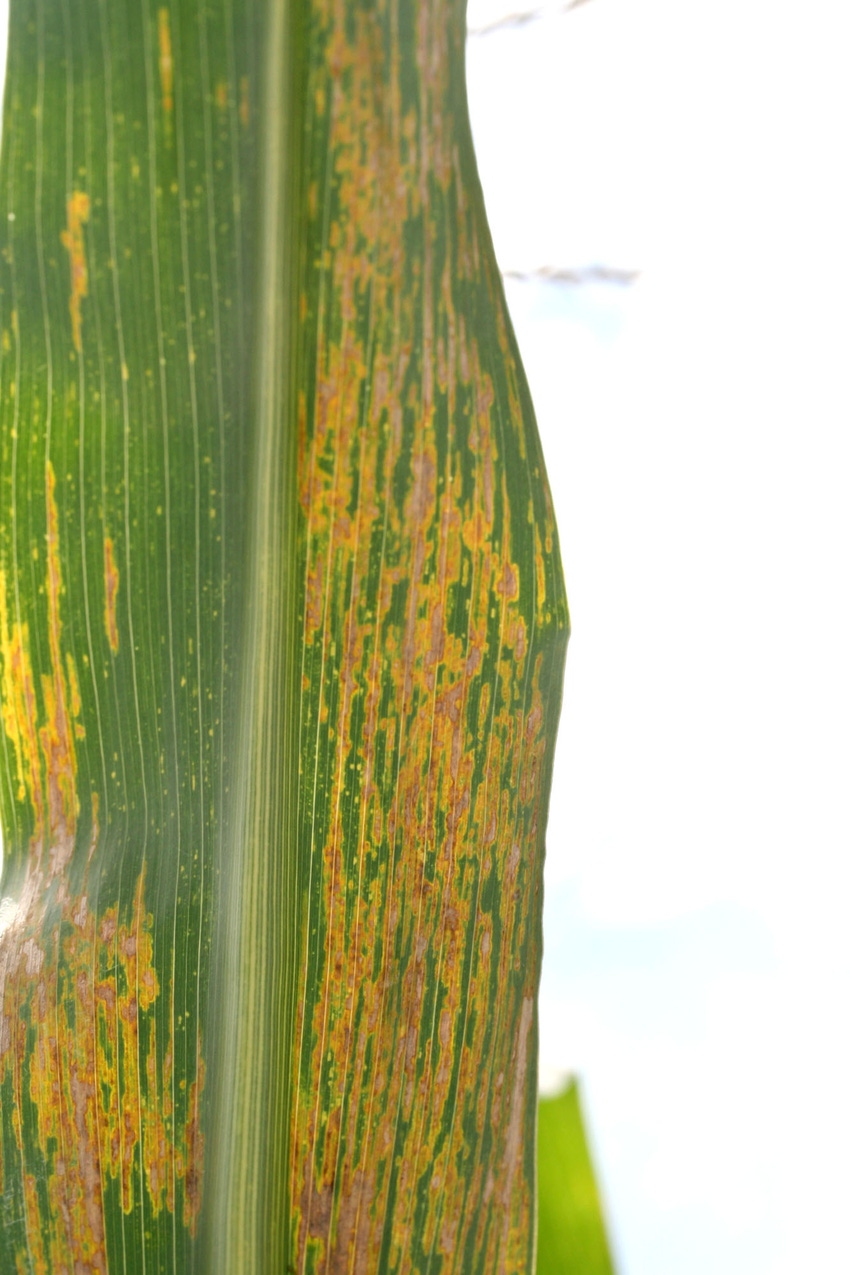October 17, 2016

A new bacterial pathogen, bacterial streak, was found in the Texas Panhandle corn crop this year, and while its effects were inconsequential, it bears watching in the future.
In June and July, corn leaves with brown, tan, orange to reddish streaks or stripes were observed and fully confirmed in a few fields in Hansford and Hutchinson counties in the Texas Panhandle, said Dr. Ron French, AgriLife Extension plant pathologist in Amarillo.
French visited fields with infected plants and saw that in initial development, leaf lesions were limited to between-leaf veins. But in later development, the lesions extended beyond the veins with a wavy, uneven shape rather than a rectangular shape.
The lesions varied in length from half an inch to several inches, and occurred throughout the leaf blade, French says. The lesions were translucent when held up to the light. These foliar symptoms were also seen in several other states where the disease has been found.
The disease, bacterial streak, caused by the Xanthomonas vasicola pv. vasculorum bacteria, was confirmed in Texas by French’s plant pathology lab in Amarillo, the Great Plains Diagnostic Network Regional Lab at Kansas State University, and by the U.S. Department of Agriculture Animal and Plant Health Inspection Service in Maryland.
NO IMPACT ON YIELD
The good thing, says Dr. Tom Isakeit, AgriLife Extension plant pathologist in College Station, is this disease has not been confirmed in other corn production areas of Texas. Also, there is no indication that this disease can cause adverse impacts in yield or quality in any of the states where it has been found.
“Although we don’t anticipate that this disease will be as important as some other diseases corn growers have to deal with in Texas, it’s a new disease, and we need to learn more about it in order to provide better disease management strategies,” Isakeit says. “So if growers think they have it, they should contact us or their local AgriLife Extension county agent.”
French says while many diseases caused by other Xanthomonas can be seed-borne on other crops, it is not known if bacterial leaf streak of corn is seed-borne.
The specialists advise when scouting for bacterial leaf streak in corn, producers should be careful not to confuse its early symptoms with gray leaf spot, a fungal disease caused by Cercospora spp. Gray leaf spot appears as rectangular lesions or stripes, which are smooth and tend to stay within the veins. These lesions are initially tan and later may appear gray as the fungus produces spores.
Advanced symptoms of gray leaf spot are quite different from bacterial leaf streak, French says. Because gray leaf spot is dependent on hot weather, high relative humidity and moisture on the leaves, it may be more prevalent during flowering, while bacterial leaf streak has been observed as early as V7 or seven leaf collar.
For the latest on southwest agriculture, please check out Southwest Farm Press Daily and receive the latest news right to your inbox.
In Texas corn production areas, gray leaf spot is a minor disease, if it occurs at all, Isakeit says.
“As a general recommendation for managing bacterial diseases, crop rotation should be practiced and weeds, especially grasses, should be controlled,” French says. “For bacterial diseases of corn, there are no chemical treatments available.
“Time will tell whether bacterial leaf streak becomes an important disease in Texas, but as this disease becomes the subject of research, we can expect to see more information on hybrid susceptibility and factors affecting disease severity.”
For more information on this and other corn diseases, go to: http://sickcorn.tamu.edu.
You May Also Like




